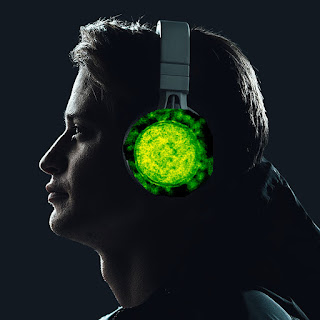How self-listening musical albums work?
Hello Sci-fi Music followers, Greg Zeroin here with more tech news. The following update is a response to our readers request. We recently published an interview with Rob Ottman from SLR Inc. Even though Mr. Ottman did a wonderful job telling us about self-listening technologies, our readers started to bombard us with requests for more details. Mr. Ottman was kind enough to pass it on to the SLR development team and one of the lead engineers, Nick Almeca took upon the task of giving us more information. Since we could not arrange for an interview, Nick sent us this information in an email, which I just copied here in its entirety.
“Hi there Greg,
greetings to all Sci-fi Music readers. We’re grateful for the opportunity to tell you more about our inventions. As I understand, your readers were most interested in the background mechanism of a self-listening album. I hope I can clarify some of the details.
Once such an album is released, a macro gets activated in it. In the first step this macro makes a virtual copy of the album (which includes the macro itself) and starts "listening" to the tracks. At the same time the macro in the virtual copy starts "listening" to the tracks of the original version. Once the listening phase is over, all tracks are covered, both create further virtual copies and repeat these steps ad infinitum.
The listening phase involves scanning the music in every frequency range, identifying the harmonies, instruments, arrangements, chord-progressions, tempo, melodic, noise elements and also estimations about possible aesthetic purposes. This analysis ranges from the level of transients/tonal micro elements to larger parts, whole songs and eventually the level of the entire album. At the same time, every copy of the album that "listens”, also "listens" to one random track from any major streaming service, to use as reference. There's also a mandatory "discussion" phase in which 2 or more macros exchange their findings and information about the tracks of the album in relation to other tracks from the world of music. At first, the discussion was designed to run in machine language exclusively but at one composer's request, a translator subroutine was added to get an idea about the content of the "conversation". This part is still in development and the sentences that it provides as output are often difficult to understand.
Since macros duplicate in a geometric sequence, it is stipulated that by the 38th round the album becomes the most frequently accessed album in history. About the same time, the procedure supposedly had a chance to compare the tracks with every musical piece ever written. We believe that reading the “conversations” gets especially interesting in that phase.
However, the exact time when the self-listening album will reach this 238 times engagement is very difficult to estimate. Obviously, for the copies and for the analyses, the marcos need processing power, memory access and storage capacity. Now, the marcos were designed to be "friendly ghosts", computer viruses that feed on calculating capacity and storage through the internet but they will never interrupt or slow down any process that is currently running on any device they may encounter. Self-listening macros only use idle capacity. Since this kind of capacity has no regular availability it is difficult to get a feel for how quickly it progresses. Careful estimations say the 238 times access could be reached anywhere between a couple of months from release to two and a half years.
Needless to say, the process will not stop even after that, and albeit slower and slower the power will increase with time, making this album the most frequently and at the same time, the most thoroughly attended music in history - until of course another, even faster and more elaborate procedure will be devised and started.
Let me see, there were two very specific requests. How self-listening differs from human listening, right? Okay, let me summarize the main differences. So in contrast with human music listening, self-listening is
1. a highly focused, unbreakable and far more detailed kind of appreciation
2. more detailed and more holistic at the same time, to be precise
3. an encounter that is repeated frequently in astronomical numbers, always looking for something new
4. a continuous practice in comparison and referencing to the entire collection of music ever done
5. an ongoing conversation about the listening experience
6. an unbroken line of trying to get better in understanding music
7. all of the above is happening 7/24 all the time, all the way with every track
And lastly there was a request to see what kind of judgments are being made in conversations. Please note that this feature is still in an early state of development so I had to cherry pick parts of it that actually make sense to us. Anyway here are some excerpts from recent discussions on the first track of Ten Ways to Lose Yourself "300".
"Structure slowly builds."
“Perturbation made it more stable.”
"March against indifference.”
“A story of pleasant and unpleasant surprises.”
In time we can share details about the macros’ “opinions” on the other tracks as well.
I hope I made some aspects of this ground-breaking technology more clear for your readers.
Sincerely,
Nick Almeca
Lead Project Engineer
SLR Inc.”




Comments
Post a Comment